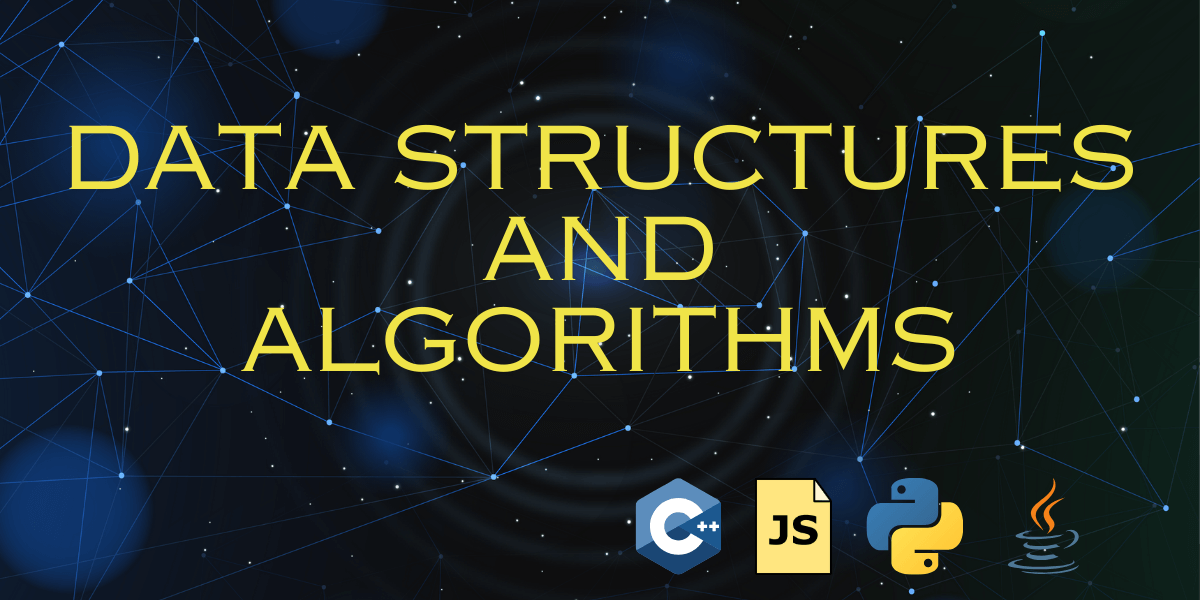Data structures and algorithms (DSA) are fundamental concepts in computer science that play a crucial role in designing efficient and effective software solutions. Every language has its data structures and its way of handling different types of algorithms.
So, as a programmer, no matter what programming language you are working with, data structures and algorithms have to be an important aspect of your day-to-day programming. That’s because we always need them to solve complex problems.
What are Data Structures and Algorithms?
Data structures and algorithms go hand in hand. You may have a set of data arranged in a certain structure which you then pass into an algorithm to execute in a certain way.
But data structures and algorithms are not the same things.
Let’s briefly explore each of them:
- Data Structures:
- Definition: A data structure is a way of organizing and storing data to perform operations efficiently.
- Purpose: Data structures help in managing and manipulating data in a structured manner, enabling efficient access, insertion, and deletion of elements. The data structure implements the physical form of the data type. Data structures provide a means to manage large amounts of data efficiently for uses such as large databases and internet indexing services
- Examples:
- Arrays
- Linked Lists
- Records
- Stacks
- Queues
- Trees (Binary Trees, AVL Trees, etc.)
- Graphs
- Hash Tables
- Algorithms:
- Definition: An algorithm is a step-by-step procedure or instructions for solving a specific problem or accomplishing a particular task.
- Purpose: Algorithms provide the logic necessary to perform specific operations on data structures, ensuring correctness and efficiency. Algorithms are used as specifications for performing calculations and data processing.
- Examples:
- Sorting algorithms (e.g., Bubble Sort, Merge Sort, Quick Sort)
- Searching algorithms (e.g., Linear Search, Binary Search)
- Graph algorithms (e.g., Depth-First Search, Breadth-First Search)
- Dynamic programming algorithms
- Divide and Conquer algorithms
- Common Operations:
- Search: Finding the location of a particular item in the data structure.
- Insertion: Adding a new item to the data structure.
- Deletion: Removing an item from the data structure.
- Sorting: Arranging elements in a specified order (e.g., ascending or descending).
- Traversal: Visiting all elements of a data structure.
- Algorithm Complexity:
- Time Complexity: Indicates the amount of time an algorithm takes concerning the input size.
- Space Complexity: Indicates the amount of memory an algorithm uses concerning the input size.
- Choosing the Right Data Structure and Algorithm:
- The choice of data structure and algorithm depends on the specific requirements of the problem, the type of operations needed, and the expected efficiency.
- Design Patterns:
- Design patterns in software engineering often involve the use of specific data structures and algorithms to solve recurring problems in a modular and reusable way.
- Importance:
- Efficient data structures and algorithms are crucial for the performance of software applications, especially in large-scale systems and real-time scenarios.
- Continuous Learning:
- The field of data structures and algorithms is broad and continually evolving. Continuous learning and exploring new algorithms and data structures contribute to becoming a more proficient software developer.
Understanding and applying these concepts empower developers to write code that is correct, efficient, and scalable. It forms the backbone of computer science and software engineering.




